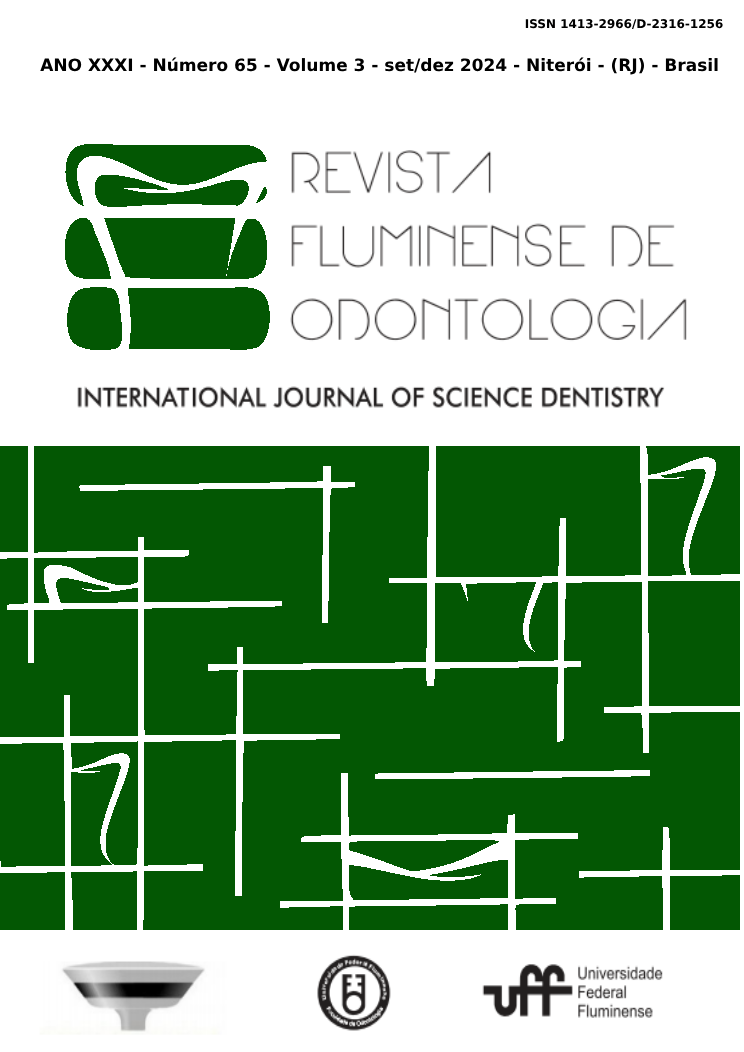SENSIBILIDADE DENTINÁRIA ASSOCIADA AO CLAREAMENTO DENTAL EM DENTES VITAIS
DOI:
https://doi.org/10.22409/ijosd.v3i65.60832Resumo
O clareamento dental pode ser realizado através da técnica caseira ou de consultório, utilizando agentes como o peróxido de carbamida (PC) e peróxido de hidrogênio (PH). Apesar de seguro, existem alguns efeitos adversos relacionados ao clareamento dental, como a sensibilidade dentinária (SD), que pode estar presente em diferentes graus dependendo da técnica utilizada. A aplicação de agentes dessensibilizantes antes, durante ou depois do clareamento dental vem sido estudada para evitar ou reduzir a sensibilidade associada ao clareamento. O estudo visa revisar a literatura em relação a aspectos e conceitos importantes do clareamento dental, discutindo seus possíveis efeitos adversos com foco na sensibilidade dentinária. Foi realizada uma pesquisa digital da base de dados Medline, via PubMed, utilizando palavras-chave relacionadas ao tema, priorizando artigos publicados há menos de 20 anos e escritos em inglês ou português. Artigos também foram buscados manualmente e foram utilizados livros de odontologias relacionados ao tema. De um total de 48 artigos, 28 foram escolhidos para a composição do trabalho, além de 2 livros de dentística que abordam o clareamento dental. Constata-se que a sensibilidade dentinária é um efeito adverso comum relacionado ao clareamento dental, que possui causa exata desconhecida, porém sabe-se que está relacionada à difusão do peróxido de hidrogênio pelos tecidos dentários. A sensibilidade dentinária é mais frequente na técnica de clareamento de consultório do que na técnica caseira, e pode ser agravada por fatores relacionados ao indivíduo e/ou ao dente. Alguns agentes como o nitrato de potássio, fosfopeptídeos de caseína-fosfato de cálcio amorfo (CPP-ACP), vidros bioativos e partículas de hidroxiapatita, se mostraram efetivos no controle da sensibilidade dentinária.
Palavras-chave: clareamento dental; sensibilidade dental; dessensibilizantes.


